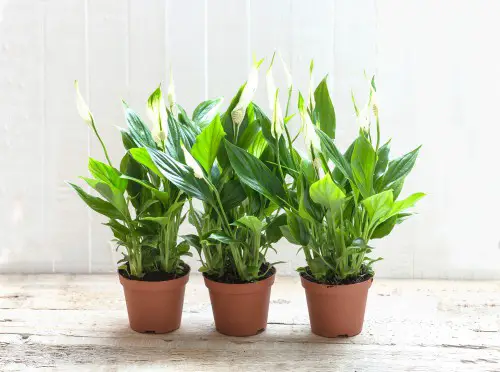Peace lilies are a popular choice for indoor plants due to their attractive foliage and ability to thrive in low light conditions. However, yellow leaves and brown spots on peace lilies are common issues that can be frustrating for plant owners.
Understanding the causes of these problems and implementing effective care strategies can help keep peace lilies healthy and vibrant.
One of the most common causes of yellow leaves and brown spots on peace lilies is environmental stress. This can be caused by a variety of factors, such as over or under watering, exposure to too much or too little light, and fluctuations in temperature or humidity.
Pest and disease infestations can also contribute to these issues. By addressing these factors, plant owners can help prevent and manage yellow leaves and brown spots on their peace lilies.
Key Takeaways on Yellow Leaves and Brown Spots on Peace Lily Plant
- Yellow leaves and brown spots on peace lilies are common issues caused by environmental stress, pests, and disease infestations.
- Effective peace lily care strategies include proper watering and soil quality, appropriate lighting and environmental conditions, and pest and disease management.
- By understanding the causes of yellow leaves and brown spots and implementing these care strategies, plant owners can help keep their peace lilies healthy and vibrant.
Check out these other related posts:
- Orange Tree Leaves Turning Yellow with Brown Spots
- What Causes Brown Spots on Fig Leaves: 5 Reasons
- What Causes Brown Spots on Dracaena Leaves: 6 Symptoms and Prevention
Understanding Peace Lily
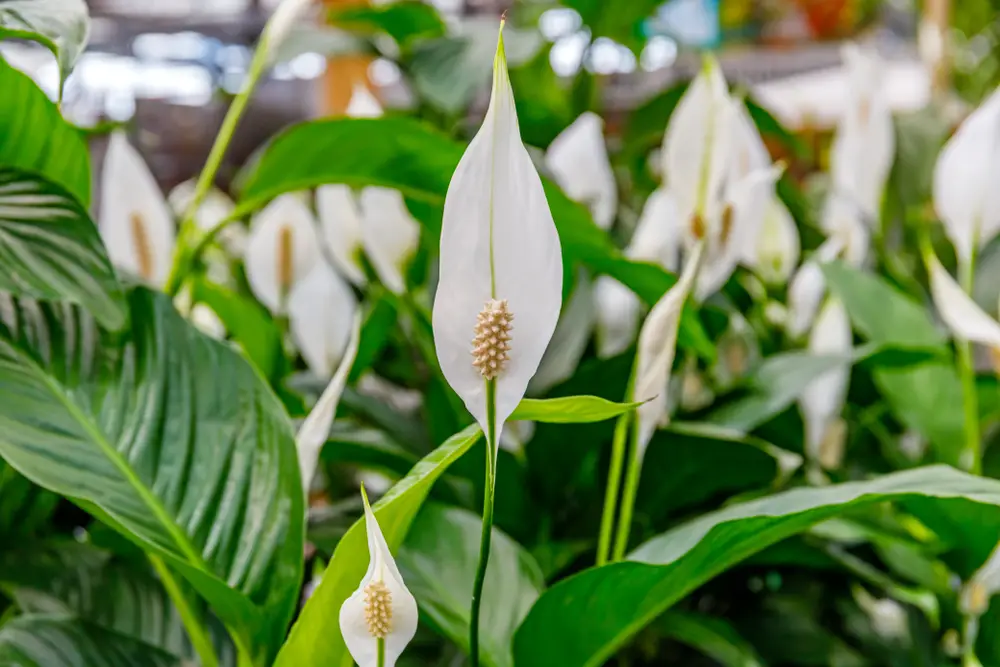
Peace lilies (Spathiphyllum wallisii) are a popular choice for indoor plants due to their attractive appearance and ability to thrive in low light conditions. They are native to tropical regions of Central and South America and can grow up to 4 feet in height.
One of the most common problems that peace lily owners face is yellowing leaves and brown spots. These issues can be caused by a variety of factors, including environmental stress, pests, and diseases.
Peace lilies prefer to be kept in moist soil, but overwatering can lead to root rot and yellowing leaves. It’s important to allow the soil to dry out slightly between waterings and to avoid letting the plant sit in standing water.
In addition to overwatering, peace lilies can also be sensitive to changes in temperature and humidity. They prefer to be kept in temperatures between 60 and 85 degrees Fahrenheit and in a humid environment. Low humidity levels can cause the leaves to turn brown and dry out.
Pests, such as spider mites and mealybugs, can also cause yellowing leaves and brown spots. Regularly inspecting the plant for signs of infestation and treating with insecticidal soap or neem oil can help prevent these issues.
Common Issues with Peace Lily Leaves
Peace lilies are popular indoor plants that are known for their attractive foliage and ease of care. However, they can develop a range of issues that can cause their leaves to turn yellow, develop brown spots, wilt, or even die.
In this section, we’ll explore some of the most common issues that can affect peace lily leaves and what you can do to fix them.
1. Yellow Leaves
One of the most common issues with peace lily leaves is yellowing. This can be caused by a range of factors, including overwatering, underwatering, low light levels, or exposure to cold temperatures.
If you notice yellow leaves on your peace lily, it’s important to identify the underlying cause and take steps to address it. For example, if you’re overwatering your plant, you may need to reduce the frequency of watering or improve drainage to prevent the soil from becoming waterlogged.
2. Brown Spots
Another common issue with peace lily leaves is the development of brown spots. This can be caused by a range of factors, including exposure to direct sunlight, overfertilization, or pest infestations.
To address brown spots on your peace lily leaves, it’s important to identify the underlying cause and take steps to address it. For example, if your plant is getting too much direct sunlight, you may need to move it to a shadier location or provide some shade.
3. Browning and Wilting
Browning and wilting are also common issues with peace lily leaves. This can be caused by a range of factors, including underwatering, overwatering, or exposure to cold temperatures.
To address browning and wilting on your peace lily leaves, it’s important to identify the underlying cause and take steps to address it. For example, if you’re underwatering your plant, you may need to increase the frequency of watering or improve the soil’s ability to retain moisture.
4. Streaks, Lesions, and Margins
Streaks, lesions, and margins are less common issues with peace lily leaves, but they can still occur. These issues can be caused by a range of factors, including fungal or bacterial infections, pest infestations, or exposure to extreme temperatures.
To address these issues, it’s important to identify the underlying cause and take steps to address it. For example, if your plant has a fungal infection, you may need to apply a fungicide to prevent the spread of the infection.
Watering and Soil Quality

Peace lilies require consistent watering to thrive, but overwatering or underwatering can cause yellow leaves and brown spots. It is important to strike a balance between keeping the soil moist and allowing it to dry out slightly between watering.
When watering, it is crucial to ensure that the soil is draining properly. Peace lilies prefer well-draining soil that allows for excess water to escape. If the soil is too compacted or heavy, it can lead to waterlogging and root rot. To improve drainage, consider adding perlite or sand to the soil mix.
In terms of water quality, peace lilies can be sensitive to the minerals and chemicals found in tap water. Using distilled or filtered water can help reduce the risk of water issues.
Additionally, some peace lilies may be sensitive to high levels of calcium in the water, which can cause brown spots on the leaves. If this is a concern, using rainwater or allowing tap water to sit out for 24 hours before watering can help reduce the calcium content.
When it comes to soil quality, peace lilies prefer a slightly acidic to neutral pH range of 6.0-7.5. If the soil is too alkaline, it can lead to nutrient deficiencies and yellowing leaves. Adding a fertilizer specifically designed for peace lilies can help ensure that the plant is receiving the necessary nutrients.
To summarize, proper watering and soil quality are crucial for maintaining healthy peace lilies. Ensuring that the soil is well-draining, using distilled or filtered water, and monitoring the pH levels can help prevent yellow leaves and brown spots.
Lighting and Environmental Factors
Peace lilies are a popular houseplant known for their attractive foliage and ability to thrive in low light conditions. However, improper lighting and environmental factors can cause yellow leaves and brown spots on the plant.
Lighting
Peace lilies prefer bright, indirect light. Direct sunlight can scorch the leaves, while too little light can cause the leaves to yellow and drop. If the plant is not receiving enough light, it may need to be moved to a brighter location.
Low light conditions can also cause yellow leaves. If the plant is not receiving enough light, it may need to be supplemented with artificial light. Grow lights can be used to provide the plant with the necessary light it needs to thrive.
Environmental Factors
Drafts and temperature fluctuations can also cause yellow leaves and brown spots on peace lilies. The plant prefers a warm, humid environment, so it’s important to keep it away from cold drafts and air conditioning vents.
Overwatering and underwatering can also cause yellow leaves. Peace lilies prefer consistently moist soil, but they do not like to sit in water. It’s important to water the plant thoroughly and allow the soil to dry out slightly before watering again.
Pest and Disease Management
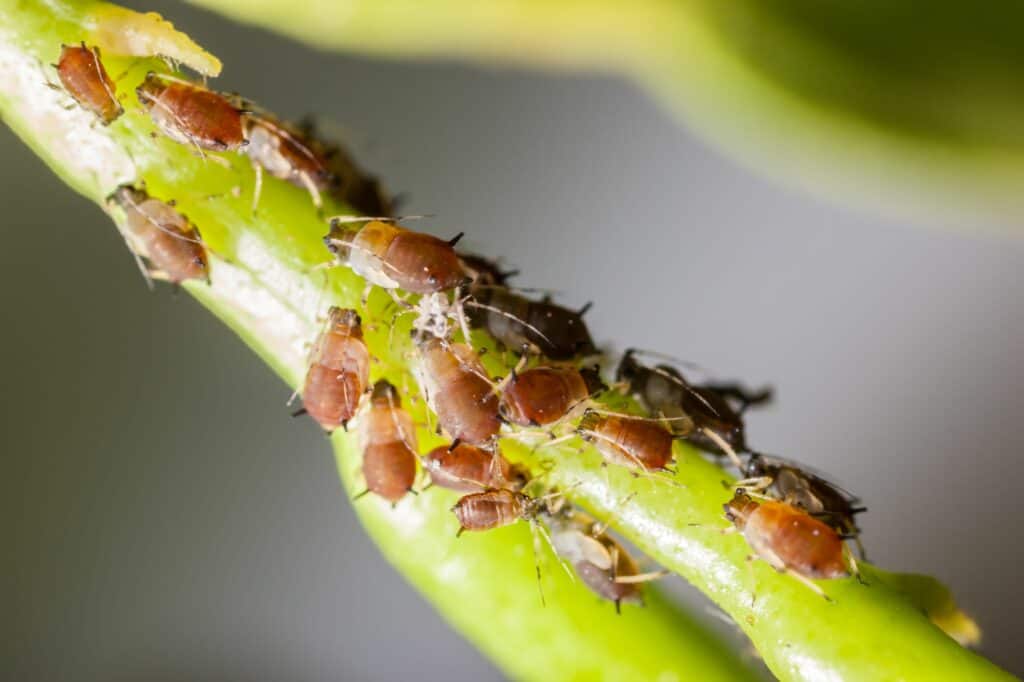
Peace lilies are generally low maintenance plants, but they can still be affected by pests and diseases. Proper care and maintenance can help prevent these issues, but it’s important to be able to recognize and manage them if they do occur.
Pests
Common pests that can infest peace lilies include mealybugs, spider mites, and aphids. These pests can cause yellowing, stunted growth, and distorted leaves. To manage these pests, it’s important to regularly inspect your plant for signs of infestation.
If you do find pests on your peace lily, there are several management options available. Insecticidal soap and neem oil are both effective against many common houseplant pests. For severe infestations, you may need to use a systemic insecticide.
Diseases
Peace lilies can also be susceptible to fungal diseases, such as root rot and leaf spot. These diseases can cause yellowing leaves, brown spots, and wilting.
To prevent fungal diseases, it’s important to avoid overwatering your peace lily. Make sure the soil is well-draining and never allow the plant to sit in standing water. If you do notice signs of fungal disease, you can use a fungicide to help manage the issue.
Nutrient and Fertilizer Application
Peace lilies require regular fertilization to maintain their health and vibrant green foliage. Fertilizer application is an essential aspect of peace lily care and should be done with care to avoid overfertilizing.
Overfertilizing can cause brown spots on peace lily leaves, yellowing of leaves, or even plant death. Therefore, it is essential to follow the recommended dosage and frequency of fertilizer application.
Peace lilies require a balanced fertilizer with equal amounts of nitrogen, phosphorus, and potassium. A slow-release fertilizer is an excellent option for peace lilies, as it provides a steady supply of nutrients over an extended period.
It is recommended to fertilize peace lilies every two months during the growing season, from spring to fall. During winter, when the plant is dormant, reduce the frequency of fertilization to once every three months.
In addition to the primary macronutrients, peace lilies also require micronutrients such as magnesium, iron, and calcium. These micronutrients are essential for the plant’s overall health and growth.
If a peace lily shows signs of nutrient deficiency, such as yellowing of leaves or stunted growth, it may require additional micronutrient supplements. In such cases, it is recommended to use a micronutrient-rich fertilizer or add micronutrient supplements to the soil..
Age and Growth Factors
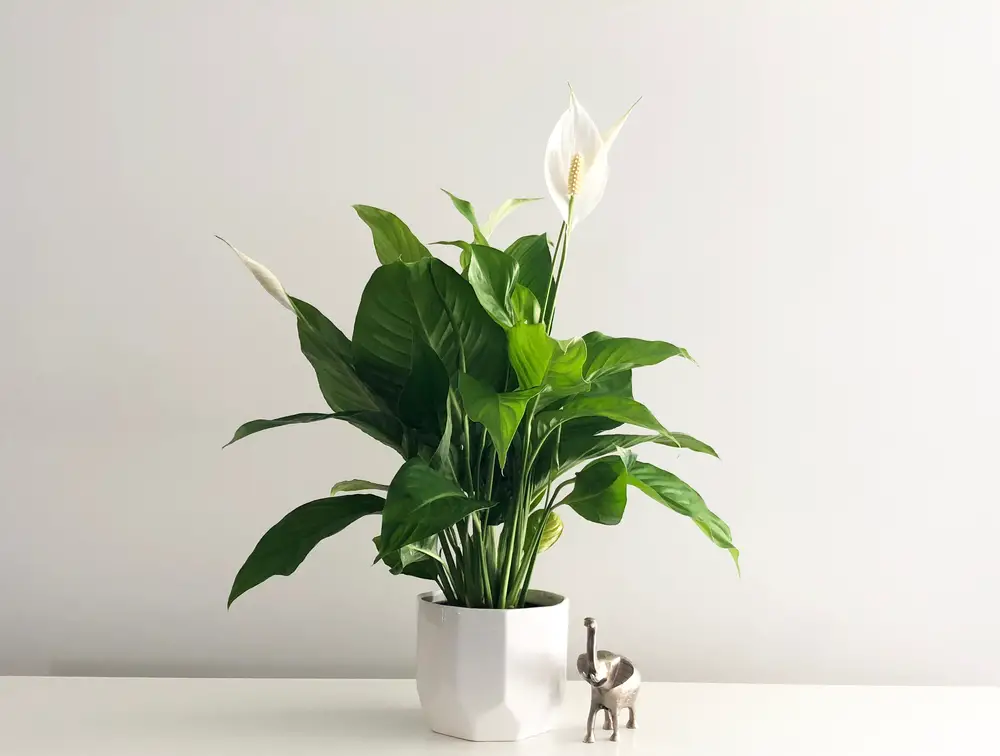
Peace lilies are known for their longevity, with some plants living up to 15 years or more. However, as with any living organism, age and growth factors can affect the overall health and appearance of the plant.
One common issue that may arise as peace lilies age is the development of brown spots on the leaves. This can be a natural process as the plant matures, with older leaves gradually dying off and being replaced by new growth. In fact, if only a few leaves are affected, it may not be cause for concern.
Transplant shock can also be a factor in the development of brown spots on peace lily leaves. When a plant is moved to a new pot or location, it may experience stress as it adjusts to the new environment.
This stress can manifest as brown spots on the leaves, but with proper care and attention, the plant should recover and continue to thrive.
In terms of growth factors, peace lilies prefer to be slightly pot-bound and may become stressed if they are in a pot that is too large. This can lead to overwatering, which can cause yellowing and browning of the leaves. It’s important to ensure that the plant is in a pot that is just the right size for its root system.
Effective Peace Lily Care Tips
Peace lilies are beautiful and easy-to-grow houseplants that can add a touch of elegance to any room. However, they require some care and attention to thrive. Here are some effective peace lily care tips to keep your plant healthy and happy:
1. Watering
Peace lilies are sensitive to both overwatering and underwatering. Overwatering can cause brown spots on the leaves, while underwatering can cause yellow leaves. It is important to keep the soil moist, but not waterlogged.
The best way to water a peace lily is to wait until the top inch of soil is dry, and then water thoroughly. Be sure to empty the saucer underneath the pot after watering to prevent the roots from sitting in water.
2. Humidity
Peace lilies prefer high humidity levels, so it is important to keep them in a humid environment. If the air in your home is dry, you can increase the humidity around the plant by placing a tray of water near it or by using a humidifier. Misting the leaves can also help increase humidity, but be careful not to get water on the flowers.
3. Potting Soil
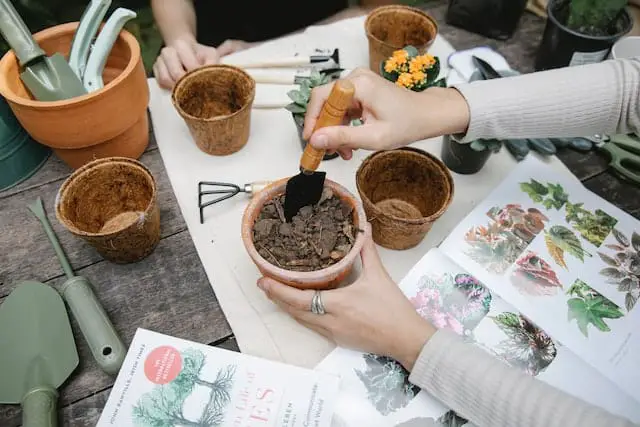
Peace lilies prefer well-draining soil that is rich in organic matter. A good potting mix for peace lilies should be made up of equal parts of peat moss, perlite, and vermiculite. It is important to choose a pot that has drainage holes to prevent water from accumulating in the soil.
4. Pruning
Peace lilies do not require much pruning, but it is important to remove any dead or yellowing leaves to prevent the plant from wasting energy on them. Use sharp, clean scissors to make a clean cut at the base of the leaf stem. If the plant becomes too large, you can divide it and repot it into smaller pots.
5. Routine Care
Peace lilies are relatively low-maintenance plants, but they still require some routine care. In addition to watering and pruning, it is important to fertilize the plant every four to six weeks during the growing season.
Use a balanced fertilizer that is diluted to half-strength. It is also important to keep an eye out for pests, such as spider mites and mealybugs, and to treat them promptly if they appear.
Solutions for Yellow Leaves and Brown Spots
Peace lilies are popular houseplants that can add a touch of greenery to any room. However, yellow leaves and brown spots can be a common problem that many peace lily owners face. Luckily, there are several solutions to this problem that can help restore your peace lily to its former glory.
Identify the Problem
Before attempting to fix the problem, it is important to diagnose what is causing the yellow leaves and brown spots. Overwatering, underwatering, and exposure to direct sunlight are some of the most common causes of yellow leaves and brown spots on peace lilies.
Petiole rot, a fungal disease that affects the stem of the plant, can also cause yellow leaves and brown spots.
Diagnosis
If the peace lily is overwatered, the soil will be wet and the leaves will be yellow and droopy. On the other hand, if the peace lily is underwatered, the soil will be dry and the leaves will also be yellow and droopy. If the peace lily is exposed to direct sunlight, the leaves will turn yellow and brown around the edges.
If the peace lily has petiole rot, the stem of the plant will become soft and mushy, and the leaves will turn yellow and brown. In severe cases, the flowers may also turn brown and wilt.
Solutions
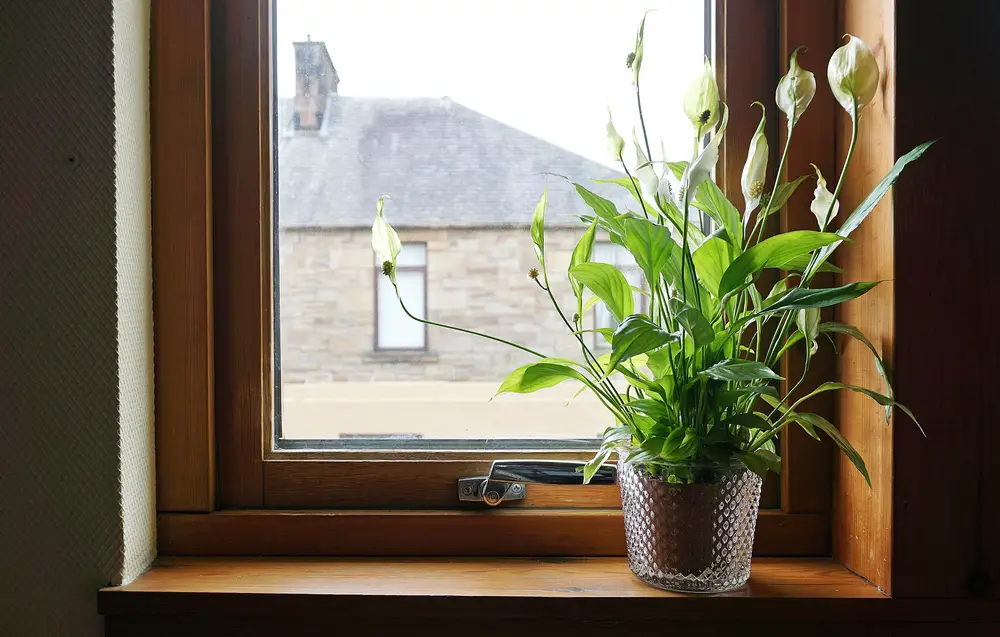
Once you have identified the problem, there are several solutions that you can try to fix the yellow leaves and brown spots on your peace lily:
- If the peace lily is overwatered, allow the soil to dry out before watering again. It is important to ensure that the soil is well-draining and that the pot has drainage holes.
- If the peace lily is underwatered, water the plant thoroughly and ensure that the soil is moist but not waterlogged. It is important to water the plant consistently to prevent the soil from drying out.
- If the peace lily is exposed to direct sunlight, move the plant to a shadier location. Peace lilies prefer bright, indirect light but can also tolerate low light conditions.
- If the peace lily has petiole rot, remove the affected leaves and stem and treat the plant with a fungicide. It is important to ensure that the soil is well-draining and that the pot has drainage holes to prevent future occurrences of petiole rot.
Frequently Asked Questions
Why are my peace lily leaves turning yellow with brown spots?
Yellowing leaves with brown spots on peace lilies are usually caused by environmental stress. Over or under watering, too much direct sunlight, or fluctuations in temperature or humidity can cause these symptoms.
Should you cut yellow and brown leaves off peace lily?
It is recommended to cut yellow and brown leaves off peace lilies to prevent the spread of disease and to encourage new growth. Use clean, sharp scissors or pruning shears to make a clean cut close to the base of the leaf stem.
How do you get rid of brown spots on peace lilies?
To get rid of brown spots on peace lilies, identify the cause of the problem and address it. If the spots are caused by overwatering, reduce watering and improve drainage.
If the spots are caused by direct sunlight, move the plant to a shadier location. If the spots are caused by pests or diseases, treat the plant with an appropriate pesticide or fungicide.
Why is my peace lily leaves turning brown?
Peace lily leaves can turn brown due to a variety of reasons, including over or under watering, too much direct sunlight, low humidity, or pests and diseases. Identify the cause of the problem and address it accordingly.
Will yellow peace lily leaves turn green again?
If the cause of yellowing leaves on peace lilies is addressed and corrected, the leaves may turn green again. However, if the leaves have already turned brown, they will not turn green again and should be removed.
How do I fix yellow leaves on my peace lily?
To fix yellow leaves on peace lilies, identify the cause of the problem and address it. If the leaves are yellow due to overwatering, reduce watering and improve drainage.
If the leaves are yellow due to too much direct sunlight, move the plant to a shadier location. If the leaves are yellow due to nutrient deficiencies, fertilize the plant with a balanced fertilizer.

Hey, I’m Lisa and I’ve been an avid gardener for over 30 years. I love writing, talking and living in the garden! Feel free to connect with me on my socials below

